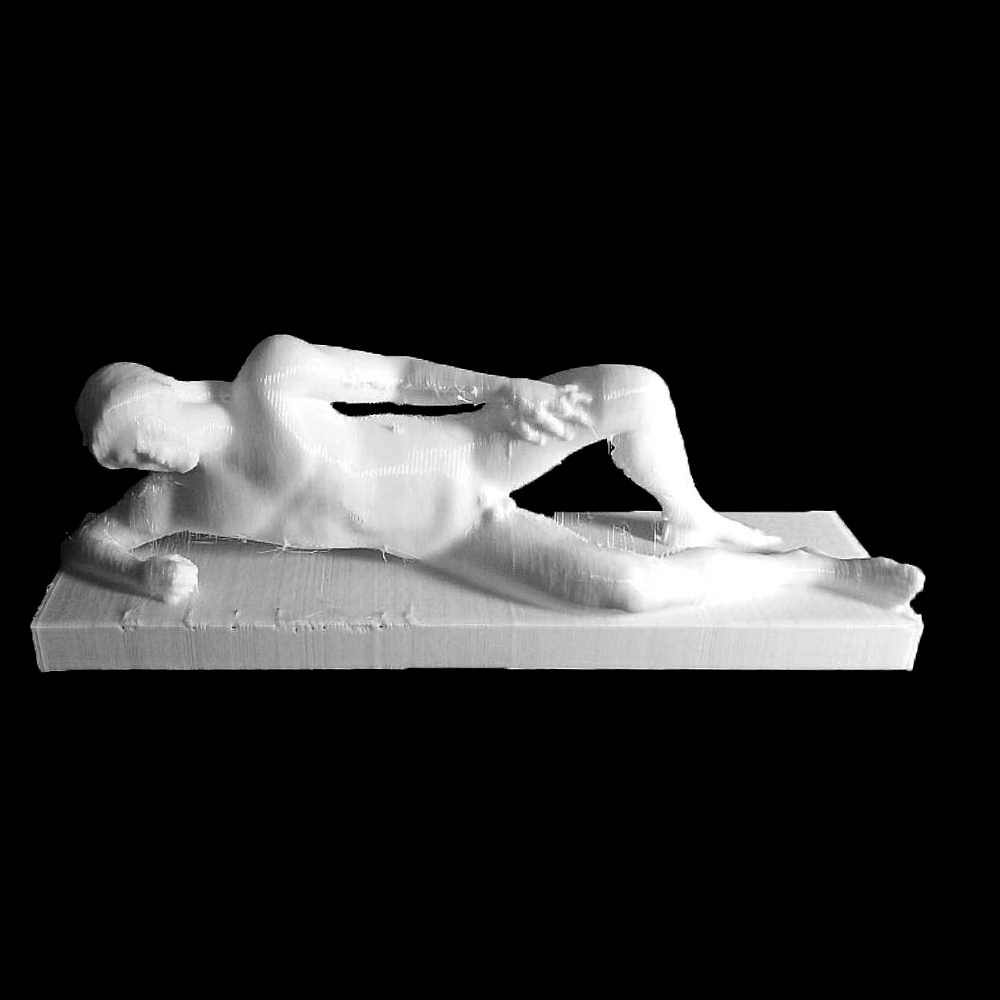
Fallen Warrior- Temple of Aphaia
myminifactory
Athena stands poised at the center of the pediment, as a fierce battle rages on either side of her. The warriors are armed but nude, except for the archers, one dressed in Oriental fashion and the other wearing a traditional short chiton under cuirass. This scene appears to depict the later Trojan War, famously described by Homer. However, this pediment focuses on the exploits of Aeginetan heroes who fought alongside the Greeks. The principal basis for identification rests primarily on the Oriental archer, while the overall similarity to the East Pediment provides strong support. Athena's prominence is unusual but clearly an important element of the Aeginetan program. In his new reconstruction of the pediments in Munich, Dieter Ohly has attempted to identify certain figures. His suggestions are given here. Athena appears in a different form than in the East Pediment, present to witness or oversee the battle. However, she stands quietly aloof and uninvolved, as if on a separate plane. She makes no gesture toward the warriors and signals no individual support. As she is present on another level, she does not divide the pediment as she does in the east. In fact, the designer has treated the field of the West Pediment quite differently. The two forces appear to be equally distributed throughout, with two additional warriors creating a traditional compositional scheme of paired opponents fighting one on one. This results in three pairs on each side of Athena, making her an important focal point. The two pairs of warriors closest to Athena are likely to represent the victorious heroes of the battle. On the Aeginetan side, this should be Ajax. However, Figure W2 has no characteristics that permit an identification. To W9 on the left of Athena, Ohly assigns a shield with a painted device depicting an eagle and a snake. As Ohly notes, Pindar describes the eagle as the sign sent to announce the birth of Ajax and the origin of his name. Given the direct and contemporary connection of Pindar with Aegina and his evident knowledge of the pediments, this evidence is significant. The shield of W10 has also survived with paint intact, featuring the forepart of a boar. However, not enough is known to connect this image with a hero. If W9 and W10 represent Ajax and his Trojan opponent, W2 and W3 should represent a Trojan and Greek respectively. However, specific identifications are not made. On either side of the Champion warrior pairs are the archers. W11 wears the long-sleeved, long-legged dress with leather cuirass and hat of an Easterner, suggesting he represents Paris. His counterpart W4 on the right should be Teucer, brother of Ajax and renowned archer in the later Trojan campaign. The style of dress and role as archer together support his Greek lineage. The archers' opponents, both victims of arrows, lie in the corners. The dying warrior W14 in the left corner is thus Greek; the figure W7 with an arrow in his chest is Trojan. The archers and their victims frame a last pair of Greek and Trojan opponents. More specific identifications are not offered. In both cases, the warrior nearest the center is the victor, creating an even match on the battlefield. As on the East, the West Pediment was preceded by a slightly earlier pedimental group, known as West Pediment 1. Unlike East Pediment 1, West Pediment 1 may not have reached completion, for no extra set of geison blocks or extra acroterion has been found. Furthermore, the style and so presumably the date of the two west pediment groups are much closer than are the groups in the east. It may be that West Pediment 1 was still under construction when a decision was made to replace the sculpture. Such fragments as do exist indicate a battle theme. It has been tentatively suggested that the subject of W.P.1 was an Amazonomachy, which would parallel the Late Archaic temple in the city of Aegina nearby. A new and fuller publication by Martha Ohly Dunn of both the earlier groups, together with West Pediment 2, is pending.
With this file you will be able to print Fallen Warrior- Temple of Aphaia with your 3D printer. Click on the button and save the file on your computer to work, edit or customize your design. You can also find more 3D designs for printers on Fallen Warrior- Temple of Aphaia.
